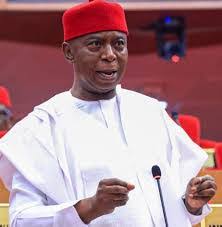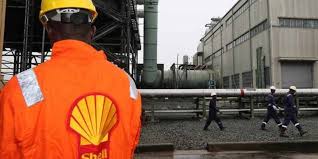Oil & Energy
Hedge Funds Turn Bearish On Oil, Bullish On Natural Gas

Traders have not been this bearish on oil in months or so bullish on United States natural gas in years.
The latest data on money managers’ positioning in the WTI and Brent crude and U.S. natural gas futures showed two contrasting trends—speculators are betting that oil prices would remain low or go even lower while increasing the bets that natural gas prices would continue marching higher.
So far this year, geopolitical and supply and demand factors have been increasingly bearish for the oil price outlook and increasingly bullish for natural gas prices.
In the oil market, hedge funds and other portfolio managers have been slashing their bullish bets since the end of January, when the U.S. sanctions on Russia’s oil trade were the primary bullish driver of managed money to bet on a tightening market.
With U.S. President, Donald Trump, now in office, the sentiment has quickly soured amid the president’s insistence on lower oil prices, his efforts to broker an end to the war in Ukraine, and – most of all – the enormous uncertainty about on-and-off tariffs and tariff threats and their potential impact on the American economy.
As a result, market participants are preparing for lower oil prices, even amid expectations of declining oil supply from Iran and Venezuela due to President Trump’s hawkish policy toward these OPEC producers.
Speaking of OPEC, the wider OPEC+ group has just said it would begin increasing supply as of April, adding further downward pressure on prices.
Faced with all these bearish drivers, money managers have been reducing their bullish bets on crude oil futures, with the U.S. WTI Crude hitting the lowest net long position – the difference between bullish and bearish bets – in 15 years at the end of February.
In the week to March 4, the latest reporting week with data released on March 7, speculators bought WTI amid a major selloff in all other commodities except for U.S. natural gas.
The net long in WTI rebounded from the 15-year low, but it wasn’t because the market suddenly started betting on higher prices going forward. The rise in WTI buying and the net long was the result of short covering in the U.S. crude futures contract.
In Brent, hedge funds cut their bullish-only bets in the week to March 4 for the biggest decline in longs since July 2024.
Unlike in crude oil, money managers have become increasingly bullish on U.S. natural gas after inventories dipped this winter to below the five-year average as demand surged in the coldest winter for six years.
The net long in natural gas further swelled in the week to March 4, as the number of new bullish bets was four times higher than the new short positions.
“Natural gas continues to benefit from rising demand, both domestically in the US and towards exports via LNG,” Ole Hansen, Head of Commodity Strategy at Saxo Bank, said, commenting on the latest Commitment of Traders report.
At the start of the winter heating season in November, U.S. natural gas inventories were higher than average for the time of the year as America entered the season with stocks at their highest level since 2016.
These stocks, however, were quickly depleted during the coldest winter for six years, with demand for space heating and power generation soaring. A month before the end of the winter heating season, U.S. natural gas inventories have now slumped to below the five-year average and well below the levels from the same time in 2024, at the end of a mild winter.
The lower inventories and the higher demand – both for domestic consumption and LNG exports – have pushed prices higher, encouraging producers to boost gas output this year. Traders bet that prices will go even higher as demand from LNG plants is set to accelerate with the ramp-up of new U.S. export plants.
Paraskova writes for Oilprice.com.
By: Tsvetana Paraskova
Oil & Energy
Nigeria Loses More Crude Oil Than Some OPEC Members – Nwoko

Nigeria’s losses due to crude oil theft has been said to be more significant than those of some other members of the Organisation of Petroleum Exporting Countries(OPEC).
The Chairman, Senate Ad- hoc Committee on Crude Oil Theft, Senator Ned Nwoko, made this known in an interview with newsmen in Abuja.
Nwoko noted with dismay the detrimental impact of the issue, which, he said include economic damage, environmental destruction, and its impact on host communities.
According to him, the theft was not only weakening the Naira, but also depriving the nation of vital revenue needed for infrastructure, healthcare, education and social development.
The Senator representing Delta North Senatorial District described the scale of the theft as staggering, with reports indicating losses of over 200,000 barrels per day.
Nwoko disclosed that the ad hoc committee on Crude Oil Theft, which he chairs, recently had a two-day public hearing on the rampant theft of crude oil through illegal bunkering, pipeline vandalism, and the systemic gaps in the regulation and surveillance of the nation’s petroleum resources.
According to him, the public hearing was a pivotal step in addressing one of the most pressing challenges facing the nation.
‘’Nigeria loses billions of dollars annually to crude oil theft. This is severely undermining our economy, weakening the Naira and depriving the nation of vital revenue needed for infrastructure, healthcare, education, and social development.
‘’The scale of this theft is staggering, with reports indicating losses of over 200,000 barrels per day more than some OPEC member nations produce.
‘’This criminal enterprise fuels corruption, funds illegal activities and devastates our environment through spills and pollution.
‘’The public hearing was not just another talk shop; it was a decisive platform to uncover the root causes of crude oil theft, bunkering and pipeline vandalism.
‘’It was a platform to evaluate the effectiveness of existing surveillance, monitoring, and enforcement mechanisms; Identify regulatory and legislative gaps that enable these crimes to thrive.
‘’It was also to engage stakeholders, security agencies, host communities, oil companies, regulators, and experts to proffer actionable solutions; and strengthen legal frameworks to ensure stricter penalties and more efficient prosecution of offenders”, he said.
Nwoko noted that Nigeria’s survival depended
Oil & Energy
Tap Into Offshore Oil, Gas Opportunities, SNEPCO Urges Companies

Shell Nigeria Exploration and Production Company Ltd. (SNEPCo) has called on Nigerian companies to position themselves strategically to take full advantage of the growing opportunities in upcoming offshore and shallow water oil and gas projects.
The Managing Director, SNEPCO, Ronald Adams, made the call at the 5th Nigerian Oil and Gas Opportunity Fair (NOGOF) Conference, held in Yenagoa, Bayelsa State, last Thursday.
Adams highlighted the major projects, including Bonga Southwest Aparo, Bonga North, and the Bonga Main Life Extension, as key areas where Nigerian businesses can grow their capacity and increase their involvement.
“Shell Nigeria Exploration and Production Company Ltd. (SNEPCo) says Nigerian companies have a lot to benefit if they are prepared to take advantage of more opportunities in its offshore and shallow water oil and gas projects.
“Projects such as Bonga Southwest Aparo, Bonga North and Bonga Main Life Extension could grow Nigerian businesses and improve their expertise if they applied themselves seriously to executing higher value contracts”, Adams stated.
Adams noted that SNEPCo pioneered Nigeria’s deepwater oil exploration with the Bonga development and has since played a key role in growing local industry capacity.
He emphasized that Nigerian businesses could expand in key areas like logistics, drilling, and the construction of vital equipment such as subsea systems, mooring units, and gas processing facilities.
The SNEPCO boss explained that since production began at the Bonga field in 2005, SNEPCo has worked closely with Nigerian contractors to build systems and develop a skilled workforce capable of delivering projects safely, on time, and within budget both in Nigeria and across West Africa.
According to him, this long-term support has enabled local firms to take on key roles in managing the Bonga Floating, Production, Storage and Offloading (FPSO) vessel, which reached a major milestone by producing its one-billion barrel of oil on February 3, 2023.
Oil & Energy
Administrator Assures Community Of Improved Power Supply

The Emohua Local Government Area Administrator, Franklin Ajinwo, has pledged to improve electricity distribution in Oduoha Ogbakiri and its environs.
Ajinwo made the pledge recently while playing host in a courtesy visit to the Oduoha Ogbakiri Wezina Council of Chiefs, in his office in Rumuakunde.
He stated that arrangements are underway to enhance available power, reduce frequent outages, and promote steady electricity supply.
The move, he said, was aimed at boosting small and medium-scale businesses in the area.
“The essence of power is not just to have light at night. It’s for those who can use it to enhance their businesses”, he said.
The Administrator, who commended the peaceful nature of Ogbakiri people, urged the Chiefs to continue in promoting peace and stability, saying “meaningful development can only thrive in a peaceful environment”.
He also charged the Chiefs to protect existing infrastructure while promising to address the challenges faced by the community.
Earlier, the Oduoha Ogbakiri Wezina Council of Chiefs, led by HRH Eze Goodluck Mekwa Eleni Ekenta XV, expressed gratitude to the Administrator over his appointment and pledged their support to his administration.
The chiefs highlighted challenges facing the community to include incessant power outage, need for new transformers, and the completion of Community Secondary School, Oduoha.
The visit underscored the community’s expectations from the LGA administration.
With Ajinwo’s assurance of enhancing electricity distribution and promoting development, the people of Oduoha Ogbakiri said they look forward to a brighter future.
By: King Onunwor
-
Niger Delta3 days ago
Otu’s Wife Champions Healthcare Access For 500 Elderly Citizens
-

 News3 days ago
News3 days ago2024: No Oil Licencing Guidelines Violated – NUPRC Boss
-
News3 days ago
World Environment Day: Researcher Advocates Sustained Citizens Enlightenment
-
Women3 days ago
IPC, NAWOJ Move To Encourage More Women In Politics …Seek Growth In Journalism
-
Sports3 days ago
Bayelsa, Others Vyinng To Host 2028 NSF
-
Rivers3 days ago
Police Arrest Notorious Car Snatcher In Rivers
-

 News3 days ago
News3 days agoNatasha Disowns Viral Tape Blackmailing Tinubu
-
Business3 days ago
Bonny Plans Culture, Tourism Expo

